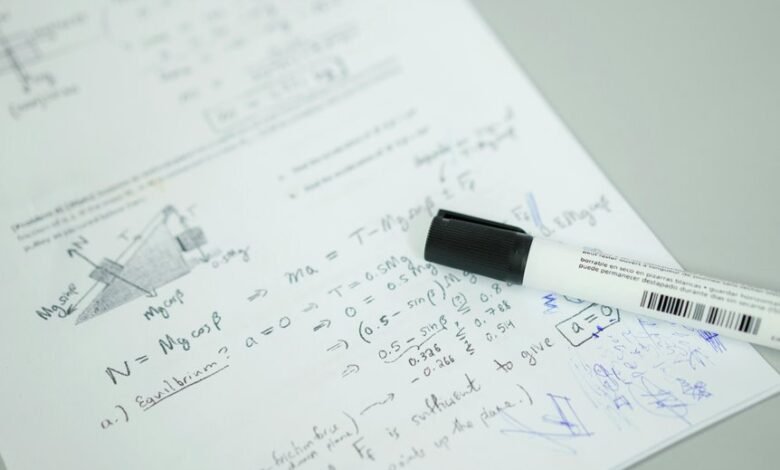Physics Notes for Class 10: Key Concepts and Important Formulas

Physics notes for Class 10 serve as a vital resource for students. They encompass fundamental concepts such as Newton’s Laws of Motion and the principles of energy. Important formulas, including F = ma, provide essential tools for problem-solving. Understanding these core topics lays the groundwork for exploring more complex physical phenomena. As the discussion unfolds, the significance of these concepts in real-life applications becomes increasingly apparent. What implications do these principles hold for everyday experiences?
Laws of Motion
When examining the fundamental principles of motion, one cannot overlook the significance of the Laws of Motion, which were formulated by Sir Isaac Newton in the 17th century.
Newton’s Laws define the behavior of objects in motion, emphasizing inertia concepts. The first law states that an object at rest remains at rest, highlighting the importance of understanding forces and motion for those seeking freedom in exploration.
Energy and Work
Energy and work are fundamental concepts that underpin the physical world, driving motion and change in various systems.
Kinetic energy, the energy of moving objects, contrasts with potential energy, stored energy due to position.
These two forms of energy illustrate how work is done when forces act on objects, transforming energy from one form to another, and enabling the dynamic processes of the universe.
Sound and Waves
Sound and waves are essential phenomena that play a crucial role in communication and the perception of the environment.
Understanding sound properties, such as frequency and amplitude, helps individuals appreciate how sound travels and interacts with surroundings.
Wave behavior, including reflection and refraction, further illustrates the dynamic nature of sound, allowing for diverse applications in technology and enhancing the freedom of expression through auditory experiences.
Light and Optics
Light and optics represent another fundamental aspect of physics that significantly influences daily life and technological advancements.
The study of reflection phenomena reveals how light bounces off surfaces, while refraction principles explain how light bends when passing through different media.
Understanding these concepts enhances comprehension of vision, lenses, and optical devices, ultimately empowering individuals to innovate and appreciate the wonders of their environment.
Conclusion
In summary, the study of physics for Class 10 is a captivating journey through concepts and calculations that clarify the complexities of the universe. From the dynamic dance of Newton’s Laws to the energetic exploration of potential and kinetic energy, students uncover the foundational forces shaping their world. Moreover, the mesmerizing mechanics of sound and light illuminate everyday experiences. Mastering these key concepts and crucial formulas equips learners with the tools to tackle real-world challenges with confidence and clarity.




